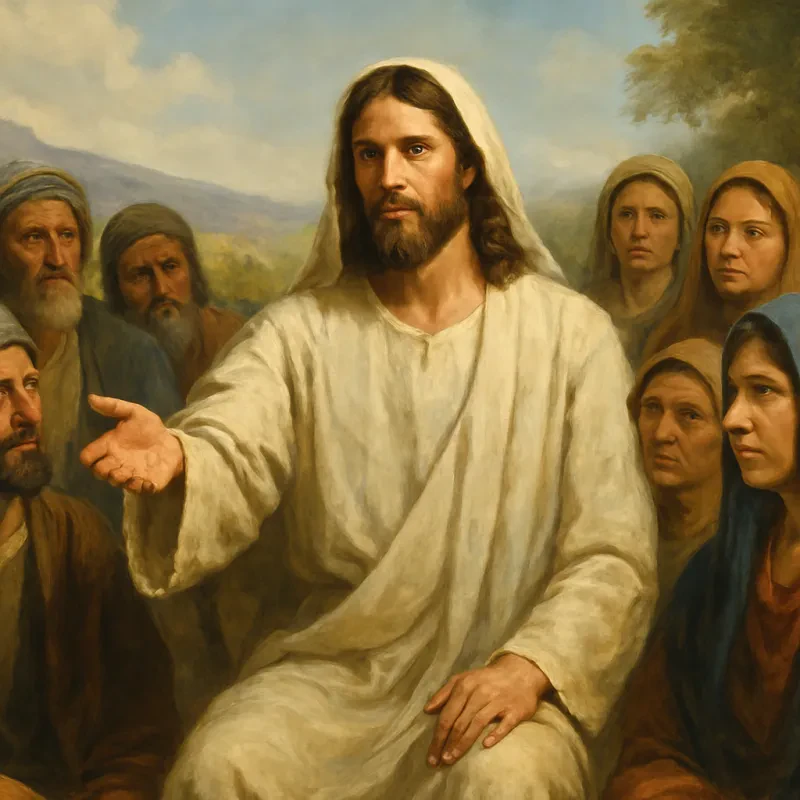Introduction
The crucifixion of Jesus Christ is one of the most profound events in human history, marking the pinnacle of God’s plan for salvation. While much attention is rightly placed on Jesus' sacrifice, the two men crucified alongside Him often fade into the background. However, their presence holds deep theological and spiritual significance. Who were these men? Why were they crucified with Jesus? And what lessons can we learn from their responses to the Savior?
In this article, we will explore the story of the three men crucified at Calvary, their different reactions, and what it means for us today as followers of Christ.
Who Were the Two Men Crucified with Jesus?
The Bible refers to these two men as criminals, thieves, or robbers, depending on the translation. In the Gospel of Luke, they are called malefactors (Luke 23:32), which means they were guilty of serious crimes.
Matthew 27:38 (NIV) states:
"Two rebels were crucified with him, one on his right and one on his left."
Some historical scholars suggest these men may have been insurrectionists or revolutionaries, possibly connected to Barabbas, the prisoner whom Pontius Pilate released instead of Jesus (Mark 15:7). Regardless of their specific crimes, these men were sentenced to die in one of the most brutal forms of execution known to mankind.
The Significance of Three Crosses on Calvary
The image of three crosses standing against the darkened sky of Golgotha holds powerful meaning. These three crosses represent the entirety of humanity’s response to Jesus Christ:
-
The Cross of Rejection – One thief mocked Jesus, rejecting His salvation.
-
The Cross of Redemption – The other thief repented and received eternal life.
-
The Cross of Salvation – Jesus, the Son of God, bore the sins of the world.
Each of these crosses tells a story that remains relevant to us today.
The First Thief: The Cross of Rejection
Luke 23:39 says:
"One of the criminals who hung there hurled insults at him: ‘Aren’t you the Messiah? Save yourself and us!’"
This man represents those who reject Christ, even in their final moments. He was in the same position as the other thief—guilty, suffering, and facing death—yet his response was bitterness and disbelief.
He mocked Jesus, demanding that if He were truly the Messiah, He should save them all. However, his request was not born out of faith but out of selfishness and scorn. This thief saw Jesus as a tool to escape his suffering, not as the Savior of his soul.
Lessons from the First Thief:
-
A hardened heart can reject Christ even when faced with the reality of death.
-
Many people want salvation from their circumstances but not from their sins.
-
Mocking Jesus does not change His identity or His mission.
The Second Thief: The Cross of Redemption
Unlike the first thief, the second criminal had a completely different response. Luke 23:40-42 records:
"But the other criminal rebuked him. ‘Don’t you fear God,’ he said, ‘since you are under the same sentence? We are punished justly, for we are getting what our deeds deserve. But this man has done nothing wrong.’ Then he said, ‘Jesus, remember me when you come into your kingdom.’"
This man acknowledged three important truths:
-
The Fear of God – He recognized God’s justice and power.
-
His Own Sinfulness – He admitted that he deserved punishment.
-
Jesus' Innocence and Authority – He saw Jesus as the righteous King with power over eternity.
With simple but profound faith, he asked Jesus to remember him. In response, Jesus gave one of the most reassuring promises in Scripture:
"Truly I tell you, today you will be with me in paradise." (Luke 23:43)
Lessons from the Second Thief:
-
It is never too late to turn to Christ.
-
True repentance acknowledges both personal sin and Jesus’ righteousness.
-
Salvation is by faith alone, not by works.
-
Jesus has the authority to grant eternal life.
Jesus: The Cross of Salvation
At the center of it all was Jesus Christ, the innocent Lamb of God, who willingly suffered for the sins of the world. His crucifixion was not a defeat, but the fulfillment of God’s redemptive plan.
Isaiah 53:5 prophesied:
"But he was pierced for our transgressions, he was crushed for our iniquities; the punishment that brought us peace was on him, and by his wounds we are healed."
As Jesus hung on the cross, He made seven final statements, each filled with significance. Among them were:
-
“Father, forgive them, for they do not know what they are doing.” (Luke 23:34) – Jesus interceded for those who crucified Him.
-
“My God, my God, why have you forsaken me?” (Matthew 27:46) – Jesus bore the weight of separation from the Father.
-
“It is finished.” (John 19:30) – The work of salvation was completed.
At His death, the temple curtain tore in two, signifying that through Jesus, we now have direct access to God (Matthew 27:51).
Lessons from Jesus’ Cross:
-
Jesus' sacrifice was planned by God for our redemption.
-
He willingly suffered to pay for our sins.
-
His victory on the cross secures eternal life for those who believe.
Which Cross Represents You?
The two thieves at Calvary symbolize two possible responses to Jesus: rejection or faith.
-
Are you like the first thief, mocking or ignoring Christ?
-
Or are you like the second thief, recognizing your need for a Savior and turning to Him in faith?
Jesus’ invitation to salvation is open to all, regardless of past mistakes. The second thief had no time for good deeds, church attendance, or religious rituals—yet his simple faith secured his place in paradise. This is the power of grace.
Conclusion: The Message of the Three Crosses
The three crosses on Calvary are more than just a historical event; they represent the ultimate decision every person must make. Will you reject Christ, like the first thief? Or will you receive Him, like the second?
Jesus’ death and resurrection prove that He is the only way to eternal life. His words still echo today:
"I am the way, the truth, and the life. No one comes to the Father except through me." (John 14:6)
If you have never placed your faith in Jesus, today is the day to call upon Him. Like the repentant thief, acknowledge your need for a Savior, trust in Christ, and receive the gift of eternal life.
Which side of the cross are you on?







